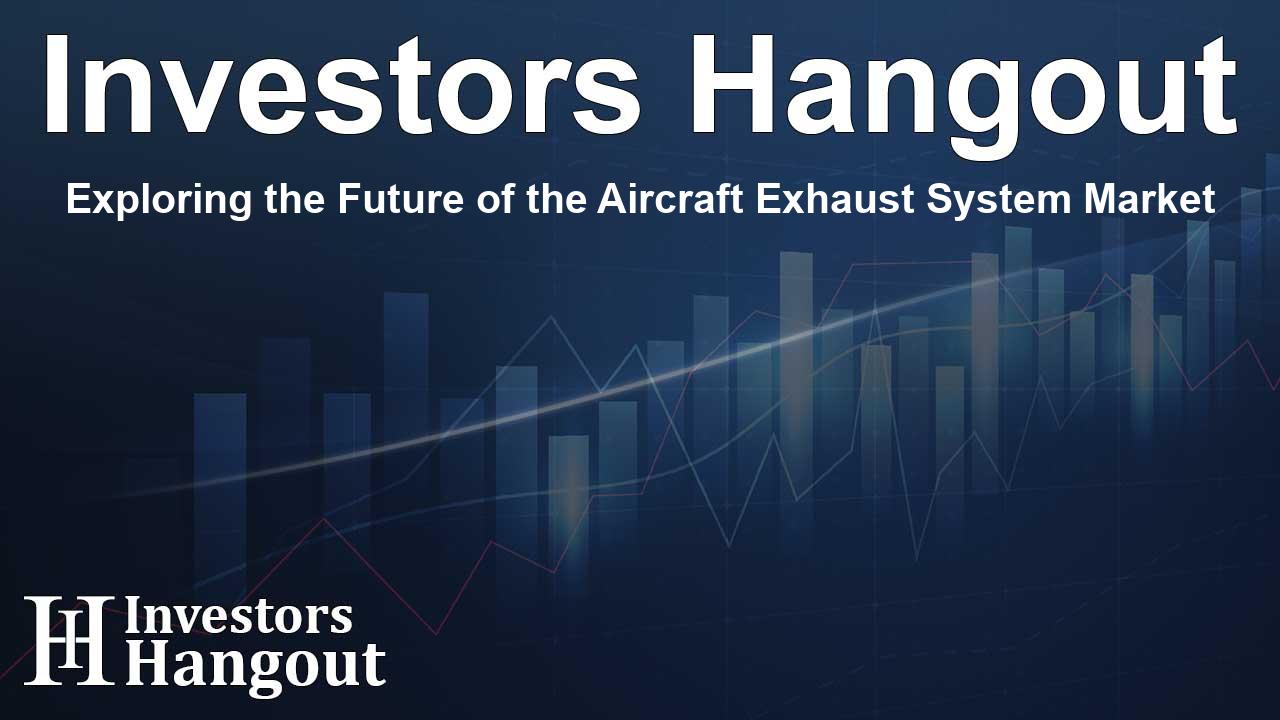Exploring the Future of the Aircraft Exhaust System Market

The Aircraft Exhaust System Market’s Bright Future
The Aircraft Exhaust System Market is on a remarkable growth trajectory, valued at USD 1.2 billion recently. Projections suggest that this value will soar to USD 2.5 billion by 2034, driven by the ever-demanding aviation industry that seeks to embrace more efficient engines and diminish its environmental footprint. As concerns about climate change and sustainability continue to gain traction, the need for modern aircraft exhaust systems has never been more critical.
Trends Driving Market Growth
Central to the expansion of the aircraft exhaust system market are significant advancements in technology. Modern exhaust systems have been ingeniously designed not only to boost fuel efficiency but also to reduce harmful emissions and minimize noise levels. Technological breakthroughs such as advanced mixers and the use of lightweight materials in the manufacturing process are shaping quieter and more sustainable aircraft. This innovation aligns with the global demand for eco-friendly aviation options, making the industry ripe for growth.
The Shift Toward Thermal Management
The swift evolution in the aircraft exhaust system market is noticeable, particularly with the increasing incorporation of electric and hybrid aircraft. These emergent technologies are creating unique prospects for the development of exhaust systems. Key areas include thermal management, which is essential for ensuring the safety and efficiency of these innovative aircraft, as well as energy recovery systems that contribute to overall fuel savings.
Consumer and Manufacturer Dynamics
The market is primarily segmented based on the type of exhaust system, focusing on engine exhaust systems and Auxiliary Power Unit (APU) exhaust systems. The engine exhaust system segment is poised for fierce growth, anticipating a compound annual growth rate (CAGR) exceeding 8% through 2034. This surge is largely attributed to the soaring demand for aircraft that can deliver high performance while being fuel-efficient. As engine technologies advance, there's an escalating need for robust exhaust systems capable of minimizing emissions while enhancing aircraft performance, adopting high-temperature alloys and ceramic composites for increased efficiency and lifespan.
Noise Reduction Innovations
Another notable trend that has emerged in the market is the heightened focus on noise reduction. In response to more stringent regulations regarding noise pollution, aircraft manufacturers are making significant strides in designing quieter aircraft. Innovations in nacelle designs and exhaust mixers are playing vital roles in this initiative, allowing aircraft to operate quietly without compromising performance.
Market Segmentation Overview
The demand for aircraft exhaust systems is notably segmented by application into commercial and military aviation. It’s noteworthy that commercial aviation currently represents over 60% of the total market share. This rise is fueled by the increasing volume of air travelers and the pressing need for fuel-efficient aircraft models. Airlines are actively investing in exhaust systems that can lower operational costs, enhance engine efficiencies, and adhere to stringent environmental standards.
Industry Players and Competitive Landscape
The landscape of the aircraft exhaust system market is marked by the participation of notable companies such as Doncasters, Ducommun, Hellenic Aerospace Industry, and ITP Aero, among others. These players are pivotal in driving developments within the industry, fostering innovations that cater to both commercial and military aviation demands.
Regional Insights and Market Leadership
North America stands tall as the market leader, with the U.S. taking decisive steps to adopt and implement stricter environmental regulations while leveraging innovative technologies. The region is expected to achieve a staggering market value exceeding USD 970 million by 2034, driven primarily by regulatory imperatives and an unwavering focus on sustainable aviation practices.
Frequently Asked Questions
What is driving growth in the aircraft exhaust system market?
The growth is driven by advancements in technology, increasing environmental regulations, and the demand for more efficient aircraft engines.
What technologies are shaping modern aircraft exhaust systems?
Technologies such as advanced mixers, lightweight materials, and thermal management systems are crucial innovations enhancing aircraft exhaust efficiency.
Which segment is expected to grow the fastest in this market?
The engine exhaust system segment is anticipated to grow significantly, with a CAGR exceeding 8% through 2034.
What role does noise reduction play in the aircraft exhaust system market?
Noise reduction is critical for compliance with stringent regulations and to minimize aviation's impact on urban environments, driving innovation in design.
Who are the key players in the aircraft exhaust system industry?
Major companies include Doncasters, Ducommun, Hellenic Aerospace Industry, ITP Aero, and Magellan Aerospace, contributing to market advancements and innovations.
About The Author
Contact Hannah Lewis privately here. Or send an email with ATTN: Hannah Lewis as the subject to contact@investorshangout.com.
About Investors Hangout
Investors Hangout is a leading online stock forum for financial discussion and learning, offering a wide range of free tools and resources. It draws in traders of all levels, who exchange market knowledge, investigate trading tactics, and keep an eye on industry developments in real time. Featuring financial articles, stock message boards, quotes, charts, company profiles, and live news updates. Through cooperative learning and a wealth of informational resources, it helps users from novices creating their first portfolios to experts honing their techniques. Join Investors Hangout today: https://investorshangout.com/
The content of this article is based on factual, publicly available information and does not represent legal, financial, or investment advice. Investors Hangout does not offer financial advice, and the author is not a licensed financial advisor. Consult a qualified advisor before making any financial or investment decisions based on this article. This article should not be considered advice to purchase, sell, or hold any securities or other investments. If any of the material provided here is inaccurate, please contact us for corrections.
